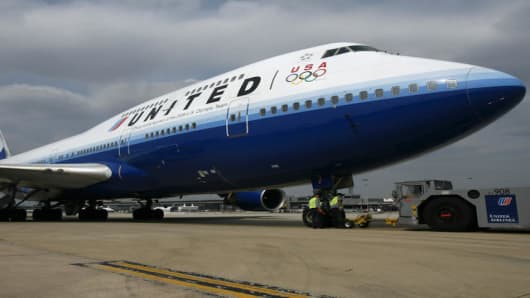Both Mr. Tilton and the US Airways’ chief executive J. Douglas Parker had frequently spoken out in favor of industry consolidation, saying it was needed to assure the long-term health of the industry, which has been pummeled by an 82.5 percent increase in prices for jet fuel over the past year.
Indeed, members of management at both airlines pushed for the discussions to continue, seeing a combination as the best way to ensure the competitive position of both carriers.
However, Mr. Tilton and United directors raised questions in recent days over the difficulty in putting such an agreement together, the people with direct knowledge of the situation said.
In particular, it became clear that the labor agreements would have to be sorted out before the combined airline could see any of the savings from the deal, which potentially could have been in the hundreds of millions of dollars.
Although the United board met nearly two weeks ago for an update on the discussions, it took no formal vote on the situation, since there was no formal agreement to consider, these people said.
One factor that may have worked against a deal was United’s unexpected first quarter loss. In late April, United said it lost $537 million during the quarter, blaming sharply higher fuel prices. United, which cut thousands of jobs when it spent more than three years under bankruptcy protection earlier this decade, said it would cut flights and eliminate 1,000 more jobs.
United and US Airways reached a merger agreement in 2000, but the arrangement fell apart in 2001 after the Justice Department said it would oppose it on the grounds that it would be anti-competitive.
Analysts had raised questions about whether the agreement would be optimal for United. A combined United-US Airways would have had a multitude of hubs, including United’s operations in Chicago, Denver and at Washington Dulles International Airport, while US Airways has hubs in Las Vegas, Phoenix and extensive operations in the Washington area, including an east coast shuttle.
Further, United, which has one of the industry’s strongest route systems in the United States and across the Pacific, would have gotten little help internationally from US Airways, which has minimal overseas service.
Mr. Garfinkle said he believed investors would support future mergers involving United or other carriers, but the airlines needed to streamline their fleets and take other cost cutting moves before that happens. "There is capital out there, but not for old-fashioned mergers," he said


